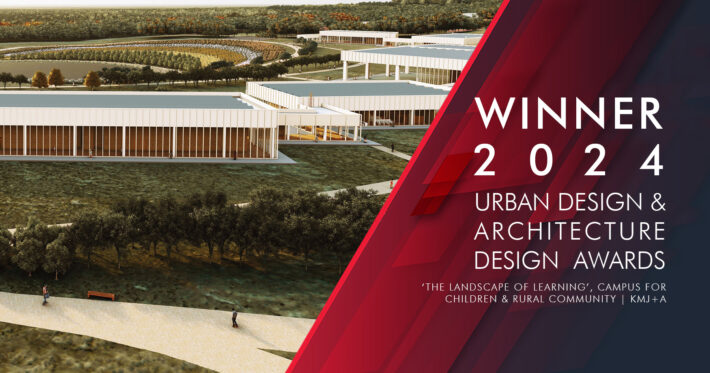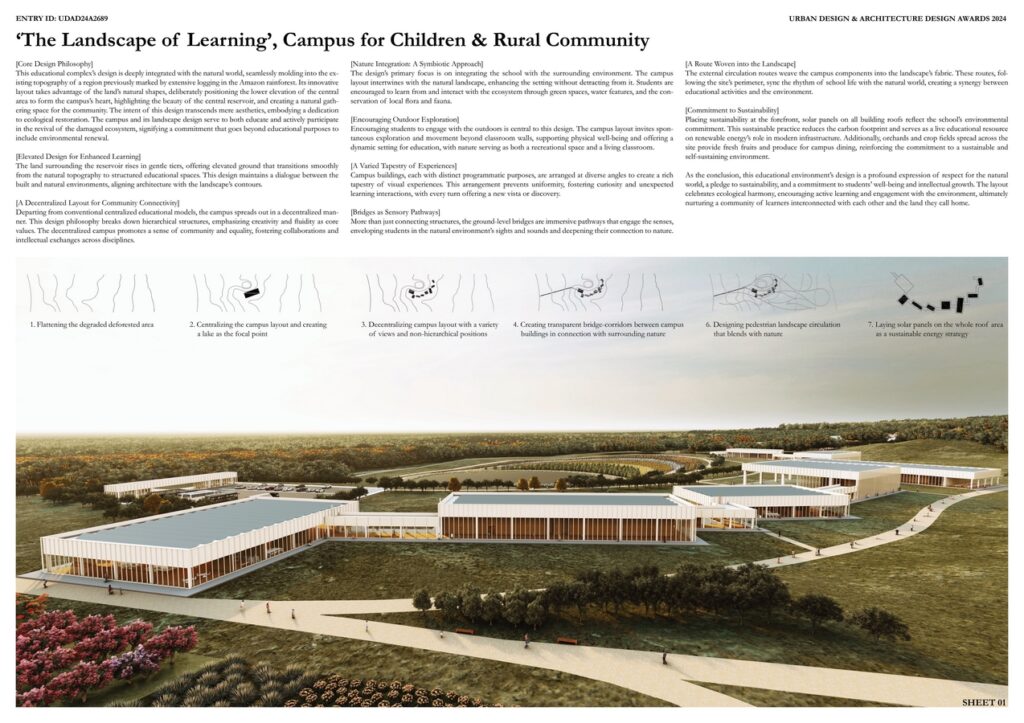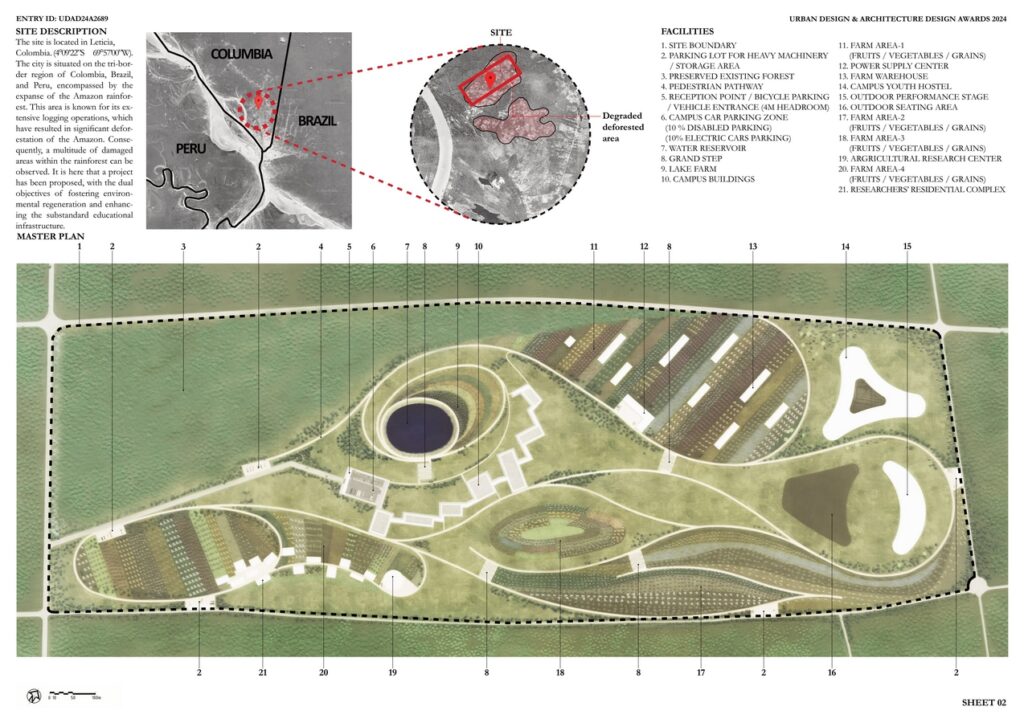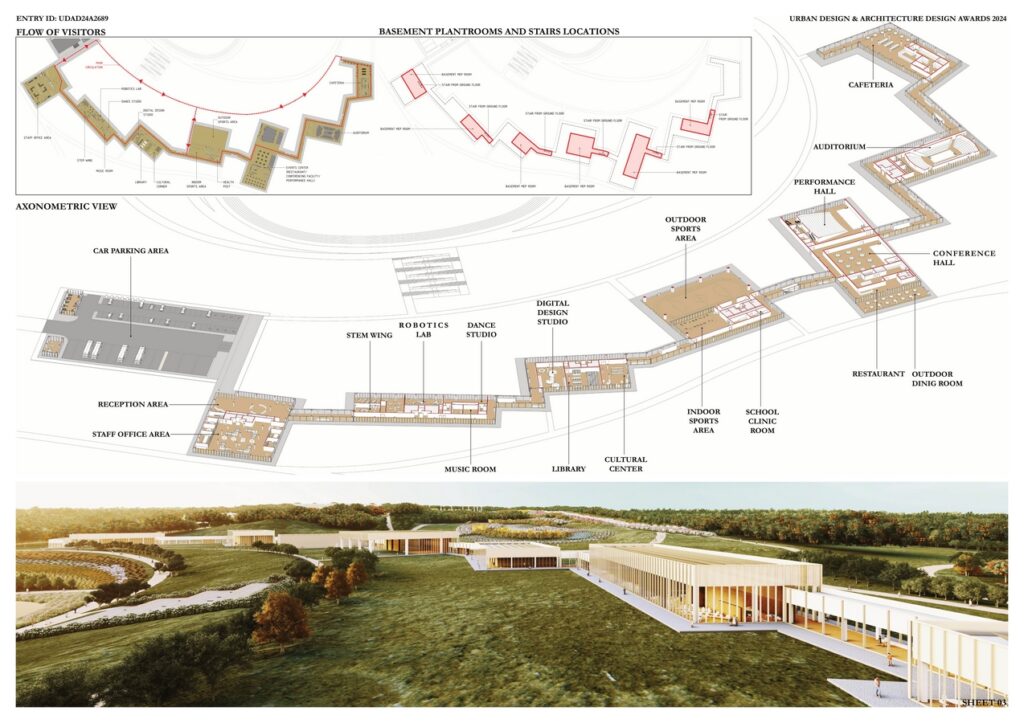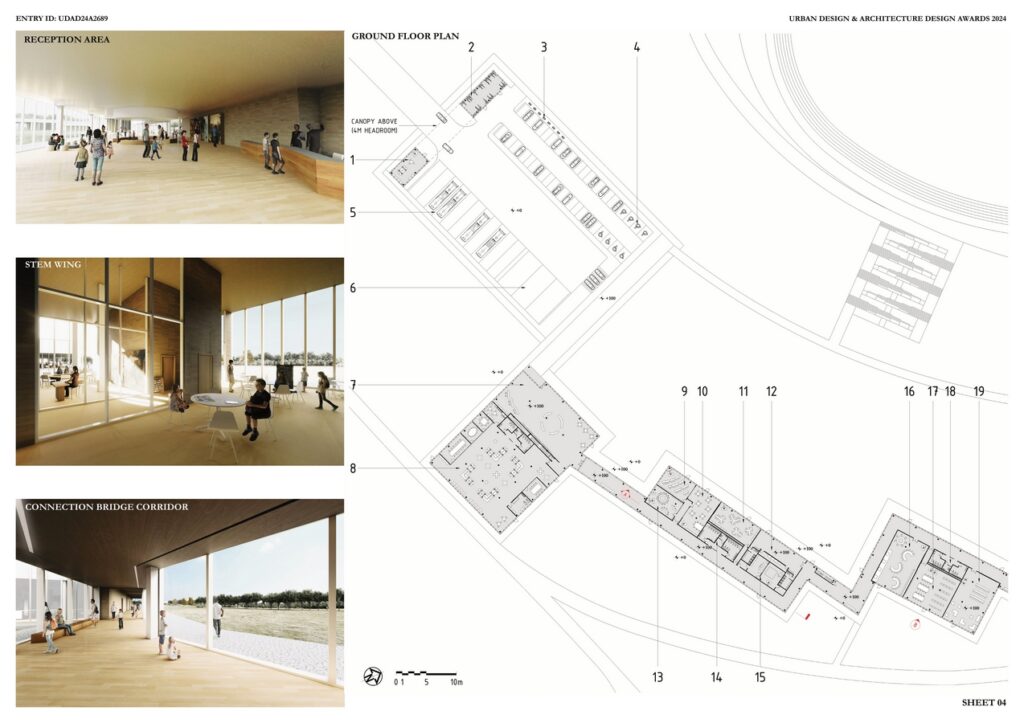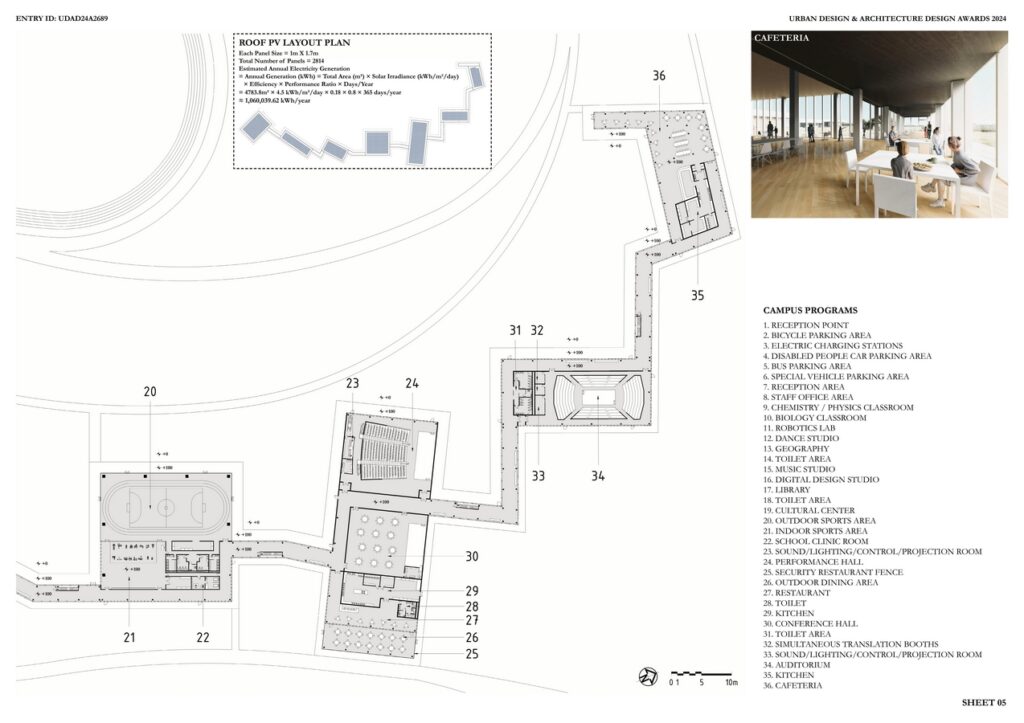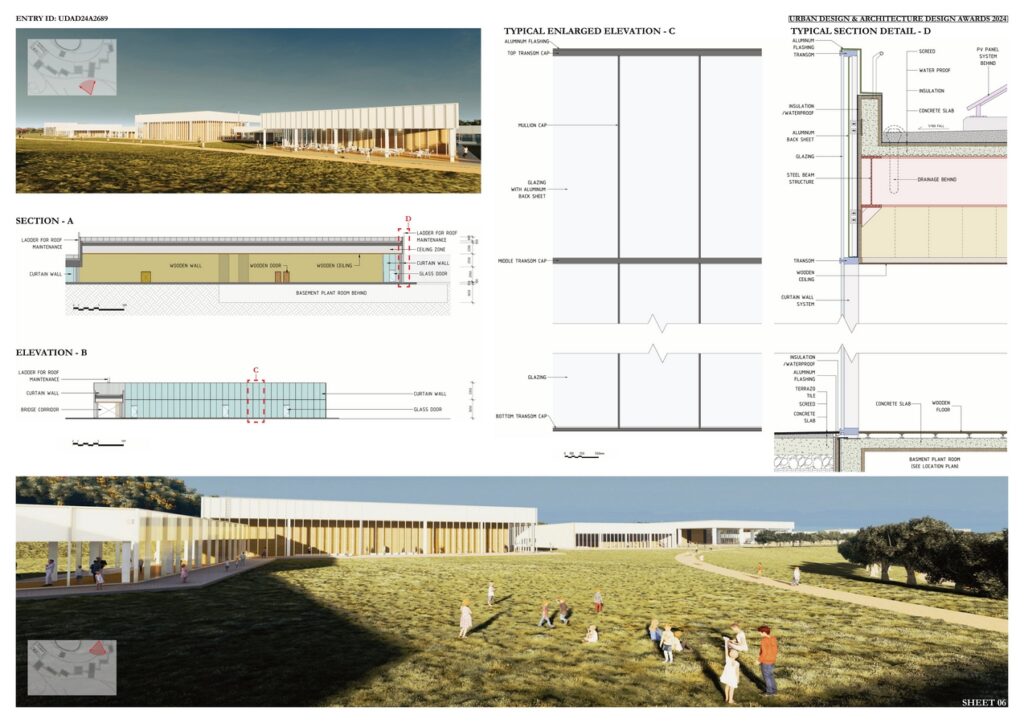This educational complex’s design is deeply integrated with the natural world, seamlessly molding into the existing topography of a region previously marked by extensive logging in the Amazon rainforest. Its innovative layout takes advantage of the land’s natural shapes, deliberately positioning the lower elevation of the central area to form the campus’s heart, highlighting the beauty of the central reservoir, and creating a natural gathering space for the community. The intent of this design transcends mere aesthetics, embodying a dedication to ecological restoration. The campus and its landscape design serve to both educate and actively participate in the revival of the damaged ecosystem, signifying a commitment that goes beyond educational purposes to include environmental renewal.
Urban Design & Architecture Design Awards 2025: Entries Open!
Take your work to the next level. Register Now…
Gold 🏆 Winner
Urban Design & Architecture Design Awards 2024
‘The Landscape of Learning’, Campus for Children & Rural Community
Educational Architecture (Concept)
Firm
KMJ+A
Architect/Designer
KIM, MINJAE
Design Team
KIM, MINJAE
Location
Leticia, Colombia (4°09’22”S 69°57’00”W)
Country
HONG KONG
Photographer/Copyright
©KIM, MINJAE
[Elevated Design for Enhanced Learning]
The land surrounding the reservoir rises in gentle tiers, offering elevated ground that transitions smoothly from the natural topography to structured educational spaces. This design maintains a dialogue between the built and natural environments, aligning architecture with the landscape’s contours.
[A Decentralized Layout]
Departing from conventional centralized educational models, the campus spreads out in a decentralized manner. This design philosophy breaks down hierarchical structures, emphasizing creativity and fluidity as core values. The decentralized campus promotes a sense of community and equality, fostering collaborations and intellectual exchanges across disciplines.
[Nature Integration]
The design’s primary focus is on integrating the school with the surrounding environment. The campus layout intertwines with the natural landscape, enhancing the setting without detracting from it. Students are encouraged to learn from and interact with the ecosystem through green spaces, water features, and the conservation of local flora and fauna.
[Encouraging Outdoor Exploration]
Encouraging students to engage with the outdoors is central to this design. The campus layout invites spontaneous exploration and movement beyond classroom walls, supporting physical well-being and offering a dynamic setting for education, with nature serving as both a recreational space and a living classroom.
[A Varied Tapestry of Experiences]
Campus buildings, each with distinct programmatic purposes, are arranged at diverse angles to create a rich tapestry of visual experiences. This arrangement prevents uniformity, fostering curiosity and unexpected learning interactions, with every turn offering a new vista or discovery.
[Bridges as Sensory Pathways]
More than just connecting structures, the ground-level bridges are immersive pathways that engage the senses, enveloping students in the natural environment’s sights and sounds and deepening their connection to nature.
[A Route Woven into the Landscape]
The external circulation routes weave the campus components into the landscape’s fabric. These routes, following the site’s perimeter, sync the rhythm of school life with the natural world, creating a synergy between educational activities and the environment.
[Commitment to Sustainability]
Placing sustainability at the forefront, solar panels on all building roofs reflect the school’s environmental commitment. This sustainable practice reduces the carbon footprint and serves as a live educational resource on renewable energy’s role in modern infrastructure. Additionally, orchards and crop fields spread across the site provide fresh fruits and produce for campus dining, reinforcing the commitment to a sustainable and self-sustaining environment.


